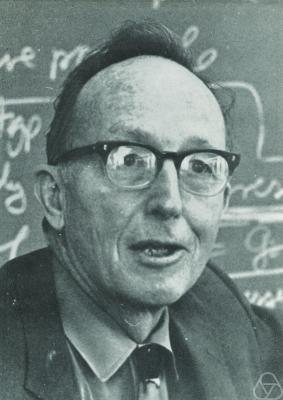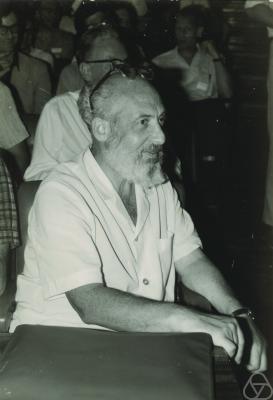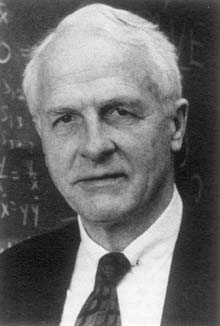
Category theory is a general theory of mathematical structures and their relations that was introduced by Samuel Eilenberg and Saunders Mac Lane in the middle of the 20th century in their foundational work on algebraic topology. Nowadays, category theory is used in almost all areas of mathematics, and in some areas of computer science. In particular, many constructions of new mathematical objects from previous ones, that appear similarly in several contexts are conveniently expressed and unified in terms of categories. Examples include quotient spaces, direct products, completion, and duality.
In mathematics, the inverse limit is a construction that allows one to "glue together" several related objects, the precise gluing process being specified by morphisms between the objects. Thus, inverse limits can be defined in any category although their existence depends on the category that is considered. They are a special case of the concept of limit in category theory.

In mathematics, a category is a collection of "objects" that are linked by "arrows". A category has two basic properties: the ability to compose the arrows associatively and the existence of an identity arrow for each object. A simple example is the category of sets, whose objects are sets and whose arrows are functions.
In category theory, a branch of mathematics, an initial object of a category C is an object I in C such that for every object X in C, there exists precisely one morphism I → X.
In category theory, a branch of mathematics, duality is a correspondence between the properties of a category C and the dual properties of the opposite category Cop. Given a statement regarding the category C, by interchanging the source and target of each morphism as well as interchanging the order of composing two morphisms, a corresponding dual statement is obtained regarding the opposite category Cop. Duality, as such, is the assertion that truth is invariant under this operation on statements. In other words, if a statement is true about C, then its dual statement is true about Cop. Also, if a statement is false about C, then its dual has to be false about Cop.

Saunders Mac Lane was an American mathematician who co-founded category theory with Samuel Eilenberg.

Samuel Eilenberg was a Polish-American mathematician who co-founded category theory and homological algebra.
In category theory, a branch of mathematics, the opposite category or dual categoryCop of a given category C is formed by reversing the morphisms, i.e. interchanging the source and target of each morphism. Doing the reversal twice yields the original category, so the opposite of an opposite category is the original category itself. In symbols, .
In mathematics, abstract nonsense, general abstract nonsense, generalized abstract nonsense, and general nonsense are terms used by mathematicians to describe abstract methods related to category theory and homological algebra. More generally, "abstract nonsense" may refer to a proof that relies on category-theoretic methods, or even to the study of category theory itself.
Categorical logic is the branch of mathematics in which tools and concepts from category theory are applied to the study of mathematical logic. It is also notable for its connections to theoretical computer science. In broad terms, categorical logic represents both syntax and semantics by a category, and an interpretation by a functor. The categorical framework provides a rich conceptual background for logical and type-theoretic constructions. The subject has been recognisable in these terms since around 1970.

Garrett Birkhoff was an American mathematician. He is best known for his work in lattice theory.
In mathematics, a pointed set is an ordered pair where is a set and is an element of called the base point, also spelled basepoint.
In mathematics, specifically in category theory, an exponential object or map object is the categorical generalization of a function space in set theory. Categories with all finite products and exponential objects are called cartesian closed categories. Categories without adjoined products may still have an exponential law.
In category theory, the notion of a projective object generalizes the notion of a projective module. Projective objects in abelian categories are used in homological algebra. The dual notion of a projective object is that of an injective object.
In mathematics, a free Boolean algebra is a Boolean algebra with a distinguished set of elements, called generators, such that:
- Each element of the Boolean algebra can be expressed as a finite combination of generators, using the Boolean operations, and
- The generators are as independent as possible, in the sense that there are no relationships among them that do not hold in every Boolean algebra no matter which elements are chosen.
In category theory, a branch of mathematics, the cone of a functor is an abstract notion used to define the limit of that functor. Cones make other appearances in category theory as well.

Steven M. Awodey is an American mathematician and logician. He is a Professor of Philosophy and Mathematics at Carnegie Mellon University.
Introduction to Lattices and Order is a mathematical textbook on order theory by Brian A. Davey and Hilary Priestley. It was published by the Cambridge University Press in their Cambridge Mathematical Textbooks series in 1990, with a second edition in 2002. The second edition is significantly different in its topics and organization, and was revised to incorporate recent developments in the area, especially in its applications to computer science. The Basic Library List Committee of the Mathematical Association of America has suggested its inclusion in undergraduate mathematics libraries.






